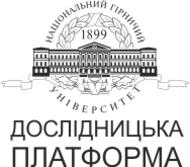№78-12
Optimisation and improvement of the technical equipment of stationary air monitoring stations in agglomerations
P. Lomazov1, А. Pavlуchenko1, Yu. Buchavyi1
1Dnipro University of Technology, Dnipro, Ukraine
Coll.res.pap.nat.min.univ. 2024, 78:140–152
Full text (PDF)
https://doi.org/10.33271/crpnmu/78.140
ABSTRACT
Goal. To analyze and develop innovative approaches to optimization and improvement of technical equipment of stationary air monitoring stations in agglomerations.
Methodology. To solve the problems, the following research methods were used: mathematical modeling – to create a model of pollutant dispersion; system analysis – to introduce the latest technologies in air quality monitoring; specification – to consider the introduction of modern automated systems and sensors; generalization – to integrate aspects of technology implementation.
Research results. Studies have shown that the introduction of the latest sensor technologies will improve the accuracy of pollutant measurements. The integration of Internet of Things (IoT) technologies will improve communication with data centers, ensuring fast information transfer. Optimization of the location of posts using geospatial analysis by GIS tools will allow for more efficient coverage of pollution zones. The introduction of energy-efficient technologies will reduce the power consumption of devices at observation posts, and data processing algorithms will improve the forecasting and efficiency of monitoring.
Scientific novelty. The number of population by administrative districts of the Dnipro agglomeration, which is located in the coverage area of the network of posts of the Regional Center for Hydrometeorology (RCHM), where air quality data are considered reliable according to the criterion of spatial distribution, is determined. The proposed approach, based on geospatial analysis using GIS tools, allows determining the minimum and sufficient number of additional observation posts. The scheme for evaluating the effectiveness of air quality monitoring systems using sensors and IoT is substantiated, which will increase the accuracy of measurements and the speed of informing the population.
Practical significance. Improving the accuracy and efficiency of air quality monitoring will contribute to better pollution control and improve public health. The introduction of technologies and optimization of the monitoring system will allow for a faster response to environmental threats.
Keywords: agglomeration, monitoring, sensor, geographic information systems, analyzer, Internet of Things, machine learning, artificial intelligence.
References
1. Shcho take post monitorynhu yakosti povitria i dlia choho vin potriben mistu? (2024). Ecoclub Rivne. https://ecoclubrivne.org/air_quality_monitoring_post/
2. Morawska, L., Thai, P. K., Liu, X., Asumadu-Sakyi, A., Ayoko, G., Bartonova, A., Bedini, A., Chai, F., Christensen, B., Dunbabin, M., Gao, J., Hagler, G. S. W., Jayaratne, R., Kumar, P., Lau, A. K. H., Louie, P. K. K., Mazaheri, M., Ning, Z., Motta, N., … Williams, R. (2018). Applications of low-cost sensing technologies for air quality monitoring and exposure assessment: How far have they gone? Environment International, 116, 286–299. https://doi.org/10.1016/j.envint.2018.04.018
3. Urban Air Pollution Monitoring. (2024). aeroqual. https://www.aeroqual.com/air-monitoring-products/outdoor-air-quality-monitors/urban-air-monitoring
4. Idir, Y. M., Orfila, O., Judalet, V., Sagot, B., & Chatellier, P. (2021). Mapping Urban Air Quality from Mobile Sensors Using Spatio-Temporal Geostatistics. Sensors, 21(14), 4717. https://doi.org/10.3390/s21144717
5. Murena, F., & Salizzoni, P. (2021). Air Quality and Sustainable Development of Urban Agglomerations in the Mediterranean Area: Science, Technology and Policies. Atmosphere, 12(4), 487. https://doi.org/10.3390/atmos12040487
6. Janusz, B., Szymoniak, S., & Pasternak, K. (2024). An IoT system for air pollution monitoring with safe data transmission. Sensors, 24 (2). https://doi.org/10.3390/s24020445
7. Martín-Baos, J. Á., Rodriguez-Benitez, L., García-Ródenas, R., & Liu, J. (2022). IoT based monitoring of air quality and traffic using regression analysis. Applied Soft Computing, 115, 108282. https://doi.org/10.1016/j.asoc.2021.108282
8. Anhurets, O., Khazan, P., & Kolesnykova, K. (2021). Upravlinnia yakistiu atmosfernoho povitria: vid kontseptsii do vprovadzhennia: Zvit za rezultatamy doslidzhen u redaktsii M. Soroky. Praha-Kyiv: Arnika.
9. Gozzi, F., Della Ventura, G., & Marcelli, A. (2016). Mobile monitoring of particulate matter: State of art and perspectives. Atmospheric Pollution Research, 7(2), 228–234. https://doi.org/10.1016/j.apr.2015.09.007




